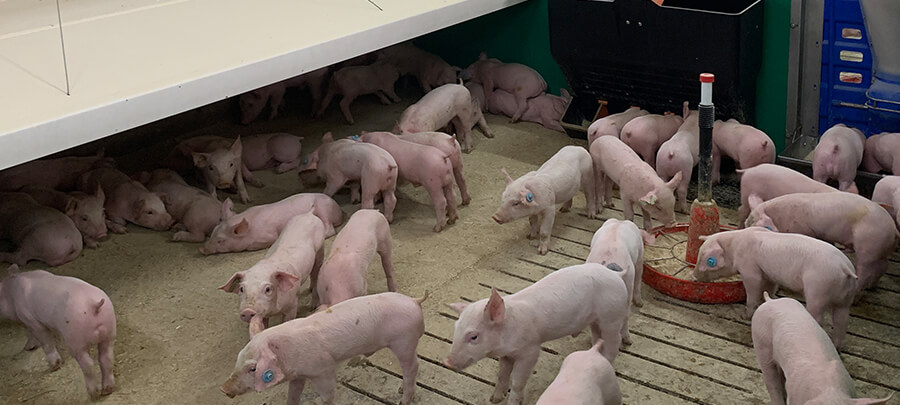Blog
Blog

The Spanish pig sector, European leader in 2024
14th January 2025 - News
The Spanish pig sector closed the year 2024 reaffirming its role as one of the strategic pillars of the national agri-food industry, and as a key benchmark both in Europe and globally. Despite facing growing challenges such as regulatory adjustments, trade tensions, and health risks, the sector has maintained its productive and export strength. With a livestock census reaching 34.4 million pigs, Spain leads the European Union in pig population and ranks as the third-largest pork producer in the world, behind only China and the United States. This report reviews the main production indicators, foreign trade figures, recent regulations, and health challenges that shaped the 2024 fiscal year.
Production
In terms of production, 2024 saw a slight increase in slaughter numbers and total production in tons. According to the MAPA (Ministry of Agriculture, Fisheries and Food), around 30 million pigs were slaughtered in the first half of the year, resulting in a production of 2.8 million tons, a 0.68% increase compared to the previous year. Catalonia leads in slaughter numbers, accounting for 41.6% of the national total, followed by Aragon (20.7%) and Castile and León (11.8%). In Europe, Spain represented 24% of the EU's production between January and July 2024, solidifying its leadership over countries like Germany, France, and Denmark.
In Catalonia, carcass meat production grew by 2%, achieving an average yield of 90 kg per unit. This modest increase reflects the stability of the sector in the region, which remains key to the Spanish pig farming industry.
Exports Evolution
Between January and September 2024, exports of the Spanish pork sector decreased by 0.9% in volume and 1.9% in value compared to the same period in 2023, with an average price of €3.21/kg. Despite this, since 2020, Spain has been the leading exporter of pork and pork products in the European Union. Catalonia accounted for 49% of exports, although it reduced its volume by 8.1% and its value by 7.8%, while Aragón stood out with a 15% increase in volume and 11% in value.
In recent years, exports to the EU have grown slightly, while extracommunity exports have decreased. China remains the main client, with 19.5% of the exported volume and 12.7% of the value, although exports to this country decreased by 4%. Other key markets include France, Italy, Japan, the Philippines, and Portugal, which together account for more than 50% of total exports.
Impact of New Regulations on the Sector
The regulations implemented in 2024 have posed challenges for farmers. On the one hand, the Royal Decree 159/20238 on animal welfare measures will come into effect in March 2025. For the pig farming sector, this means changes to farm conditions and animal handling, primarily increasing the available free floor area per animal, and incorporating other measures such as dedicating 2.5% of the surface area to observation and isolation zones, installing devices to measure and record certain gases, setting new standards for feed, water, feeders, environmental conditions, and ensuring the availability of manipulable materials. Many of these measures entail higher costs and increased administrative management, prompting Unió de Pagesos to request both regional and national authorities to consider a moratorium and flexible measures for the implementation of this decree, allowing for a gradual adaptation while maintaining current production capacity.
On the other hand, this year saw the publication of Directive (EU) 2024/17859, which amends Directive 2010/75/EU on industrial emissions and integrated pollution control. Among other provisions, the reduction of the thresholds for UGM (Major Livestock Units) means that smaller farms will now fall under the requirements of this directive, which could jeopardize their viability due to the high management and bureaucracy costs. The European Commission will publish an implementation act by September 1, 2026, with uniform operational standards, and member states will apply the provisions of the Directive over a period of 4 to 6 years, depending on the UGM of each farm, meaning between 2030 and 2032.
Health Challenges: African Swine Fever
African swine fever (ASF), a disease primarily transmitted through wild boars, remains a threat in Europe due to factors like wild boar density and animal transportation. This requires strict biosecurity measures on farms, transport, and constant surveillance to detect potential outbreaks early.
In Spain, no cases were detected in 2024, but the evolution in Europe raises concerns, especially in Germany, where several outbreaks were recorded in domestic pigs and wild boars during the summer, even in previously disease-free areas. Germany, along with other countries like Poland and Denmark, has adopted measures such as fencing off infected areas to contain the spread.
Since 2014, Poland, Romania, and Hungary have been the most affected countries in the EU, with outbreaks in both domestic pigs and wild boars. In 2024, the problem persists in Eastern Europe, with outbreaks reported in countries such as Bosnia-Herzegovina, Serbia, and Ukraine. In Asia and Oceania, the disease has spread since its emergence in China in 2018. In the Americas, the virus reappeared in 2021 in the Dominican Republic and Haiti, marking its return to the continent after decades.
ASF has serious implications for international trade, as some countries do not recognize the regionalization of ASF-free areas, restricting pork imports. This especially affects countries like Spain, one of the top pork exporters. As a result, organizations such as Unió de Pagesos emphasize the need for the European Union and the Spanish Government to work on bilateral agreements so that third countries recognize these ASF-free zones and minimize trade restrictions.
Perspective
In summary, 2024 has been a year of contrasts for the Spanish pig sector. On the one hand, production and export leadership have remained solid; on the other, significant challenges have emerged in regulatory, economic, and health areas. Adapting to new regulatory demands, remaining vigilant against diseases such as African swine fever, and preserving international competitiveness require the sector to evolve with resilience and innovation. In this context, collaboration between government bodies, farmers’ organizations, and producers will be essential to ensure the long-term sustainability, animal welfare, and profitability of one of the most important industries within Spain’s agri-food system.
Source: Unió de Pagesos.








